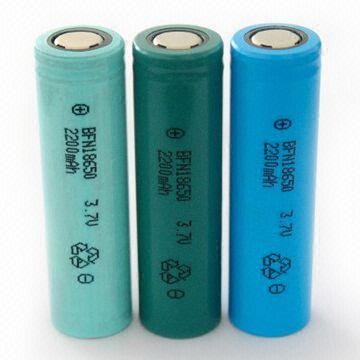Australian researchers have developed a concept battery based on storing protons produced by splitting water, advancing the potential for hydrogen to replace lithium as an energy source in battery-powered devices.
Dubbed the “proton flow battery,” the RMIT-developed concept eliminates the need for the production, storage and recovery of hydrogen gas, which currently limits the efficiency of conventional hydrogen-based electrical energy storage systems.
“As only an inflow of water is needed in charge mode – and air in discharge mode – we have called our new system the ‘proton flow battery’,” lead researcher Associate Professor John Andrews said of the concept, which combines the best aspects of hydrogen fuel cells and battery-based electrical power.
“Powering batteries with protons has the potential to be a much more economical device than using lithium ions, which have to be produced from relatively scarce mineral, brine or clay resources,” said Andrews, from RMIT’s School of Aerospace, Mechanical and Manufacturing Engineering.
“Hydrogen has great potential as a clean power source and this research advances the possibilities for its widespread use in a range of applications – from consumer electronic devices to large electricity grid storage and electric vehicles.”
The concept integrates a metal hydride storage electrode into a reversible proton exchange membrane (PEM) fuel cell. During charging, protons produced from splitting water are directly combined with electrons and metal particles in one electrode of a fuel cell, forming a solid-state metal hydride as the energy storage. To resupply electricity, this process is reversed.
The research, published in the International Journal of Hydrogen Energy (January, 2014), found that, in principle, the energy efficiency of the proton flow battery could be as high as that of a lithium ion battery, while storing more energy per unit mass and volume.
The published paper is the first to articulate and name the proton flow battery concept, and the first to include an experimental preliminary proof of concept.
“Our initial experimental results are an exciting indicator of the promise of the concept, but a lot more research and development will be necessary to take it through to practical commercial application,” Andrews said.
In an interview with RenewEconomy on Tuesday, Andrews said that if they could get a major R&D effort going – and benefit from parallel and complementary research efforts in Australia and overseas – he expected it might take five to 10 years to get the technology to practical application.
“Although we only relatively recently got to this critical stage of proving we can get protons reversibly in and out, he said, “the initial mood (in the industry) is one of great interest.”
What happens next, he said, “depends on whether we can attract significant governmental or private sector investment.”
Andrews said that he expected the initial application of the RMIT-developed proton flow batteries to be in small-scale storage devices based on proton flow.
But he added that once the technology was proven in small-scale applications, it would be scaled up for use both in stationary renewable energy applications and in larger portable devices, such as EVs.
“The key thing about batteries and hydrogen fuel cells,” Andrews told RenewEconomy, “is that they’re eminently scalable devices once you get the technology right. You can go reasonably quickly from a small device to larger-scale usage.”
Andrews said the quest to develop energy storage for the roll-out of large-scale renewables was why he had gone into the field of hydrogen flow batteries.
“Hydrogen has to be inextricably linked with renewables to get a zero-emission energy system,” Andrews told RE. “Hydrogen is the store for renewable energy that allows it to be used for transport and with 100% reliability in grid and other stationary applications.”








